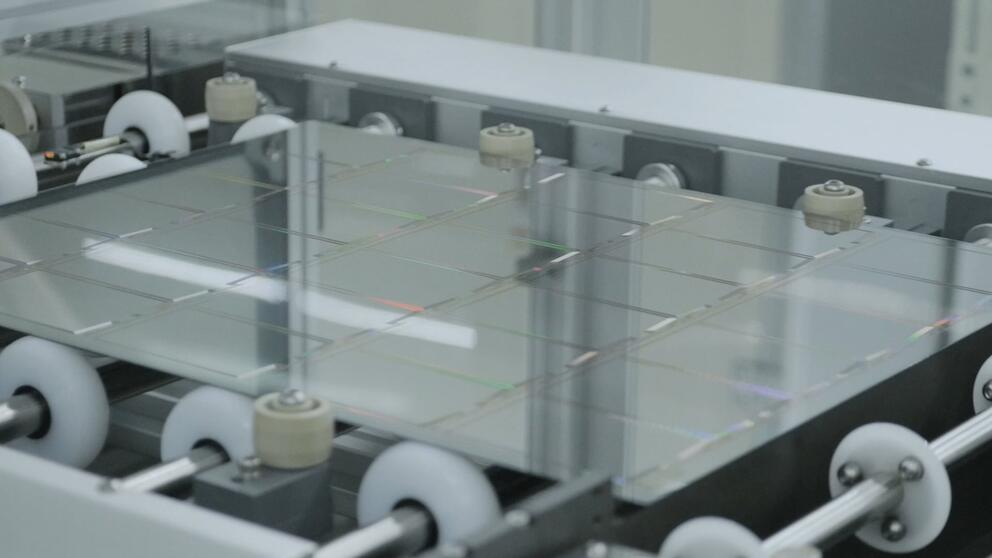Touchscreen structure Sensor structure of projected capacitive touchscreens
Design of projected capacitive touchscreen sensors
The sensor function of a projected capacitive touchscreen enables multiple, simultaneously measurable touch points. This is made possible by two separate grid-shaped ITO-coated layers of PET or glass.

Instead of the usual ITO coating, there is also the option of a grid-shaped, two-layer construction of lead wires.
Both layers combine to form an electronic field, with one layer acting as the X-axis and the other as the Y-axis. Due to the direct connection between the surface (usually glass) and the sensor, contact is projected directly onto the electric field. This removes charge from the circuit and results in a change in capacitance between the electrodes.
This change can therefore be measured precisely using the X and Y coordinates, whereby several points of contact can also be defined exactly. There are basically two possible detection methods:
- Mutual capacitance
- Self-capacitance
Mutual capacitance for multi-touch capable PCAP touchscreens
As a rule, projected capacitive (PCAP for short) touchscreens use the mutual capacitance method, which captures several touches on the screen with a single scan and is therefore multi-touch capable.
Mutual capacitance systems have a much higher density of interpolatable electrode information than self-capacitance systems, which enables more precise touch recognition.
However, due to the counter capacity required for measurement, they can usually only be operated with bare fingers and only very poorly with gloves or prostheses.

Self Capacitance Systems
Self-capacitance systems, on the other hand, work with intrinsic capacitance. This method also allows the measurement of touch points with gloves, but makes multi-touch control considerably more difficult.
With the self-capacitance method of multi-pads, the controller can determine each electrode individually, but the implementation of the multi-touch function is problematic, especially with larger screen diagonals.
The mutual capacitance method is therefore generally preferred for projected capacitive touchscreens.

Comparison of Self Capacitance vs. Mutual Capacitance
| Self Capacitance | Mutual Capacitance | |
|---|---|---|
| Input Method | Finger, Conductive Pen, Thick Gloves | Finger, Conductive Pen, Thin Gloves |
| Second Surface | Yes | Yes |
| Response Time | 10 ms | 6 ms |
| Light transmission | 84 % - 90 % | 84 % - 90 % |
| Touching | In general 1 (dual) | 20+ |
| Accuracy | >98.5% | >99% |
